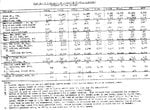Had this question asked an email group. Wondering if any of you guys have any input on it.
The R2800B engine (F4U-1/F6F-3/5) used ADI to reach 60" MAP using 100 octane Av-gas. This ADI serves two functions.
1. Cooling
2. More importantantly- Anti-detonation.
However the P-51B/D uses the same fuel (100 octane) and has a mile power rating of 61" MAP and a War Emergency rating og 67" MAP.
The P-51 however uses no ADI. So how does the P-51 V1650-3/7 attain such high MAP with no Anti-detonate?
The R2800B engine (F4U-1/F6F-3/5) used ADI to reach 60" MAP using 100 octane Av-gas. This ADI serves two functions.
1. Cooling
2. More importantantly- Anti-detonation.
However the P-51B/D uses the same fuel (100 octane) and has a mile power rating of 61" MAP and a War Emergency rating og 67" MAP.
The P-51 however uses no ADI. So how does the P-51 V1650-3/7 attain such high MAP with no Anti-detonate?


